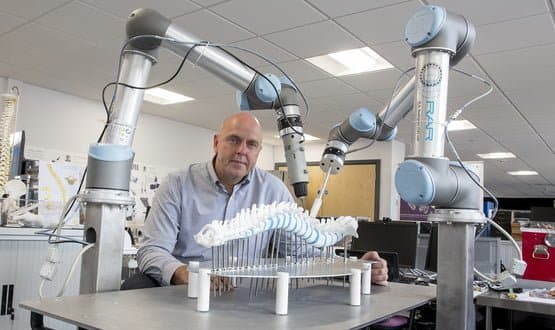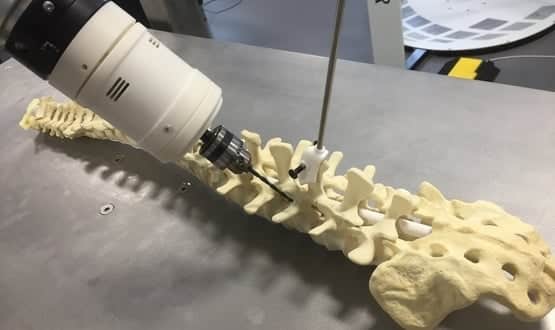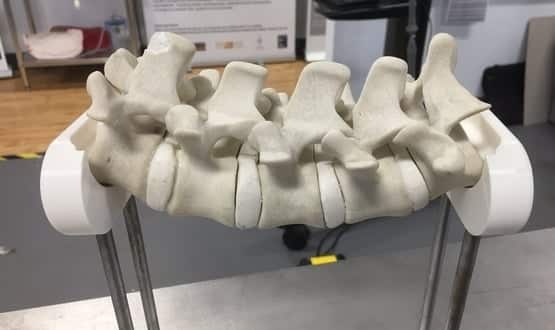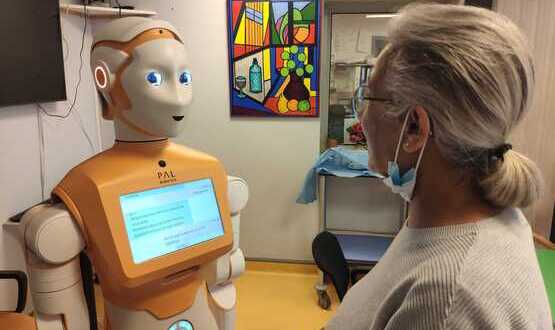Robots to perform spinal surgery with greater accuracy
- 10 January 2019

Robots which drill into patient’s spine to provide greater accuracy are to be used as part of a research project.
The project, led by Nottingham Trent University, involves two robotic arms semi-autonomously drilling into a patient’s individual vertebrae.
The arms, known as the datum and tooling robots, work together to secure the patients spine and drill as little as 0.1 of a millimetre.
The datum robot is secured to a vertebrae and moves with it to follow the natural movements of the patient.
It instantly relays information on this movement to a computer, allowing the tooling robot to adjust automatically so that it remains on its pre-determined path.

The technology promises to deliver levels of accuracy unachievable by human hands.
Augmented reality will also be used to give surgeons live visual feedback during the surgery, allowing them to monitor the depths of the holes being drilled.
The holes drilled in the vertebrae are used to insert pedicle screws, which are attached to rods that allow surgeons to move individual vertebrae and realign the spine.
The research is being led by Professor Philip Breedon, of the Medical Design Research Group alongside Professor David Brown of Nottingham Trent University’s school of science and technology.
Prof Breedon added: “Surgeons performing life-changing operations to correct spinal conditions such as scoliosis or kyphosis have to ensure pinpoint levels of accuracy are achieved to avoid causing unnecessary and potentially serious injuries.
“This technology promises to deliver greater levels of accuracy than ever previously achieved – or even humanly possible – to improve the safety and efficiency of such procedures which are needed by people with serious spinal conditions.”

Professor Bronek Boszczyk, head of spinal surgery at Benedictus Krankenhaus Tutzing, Germany and visiting professor at the university, said the project was a “brilliant example of robotics can enhance and improve operations”.
“It is paramount that spinal procedures are carried out with total accuracy in order to minimise what can be substantial risks to a patient,” he said.
“This technology has the potential to minimise those risks by performing a key part of the operation with accuracy which cannot be achieved by a human hand.
“It’s a brilliant example of how robotics can enhance and improve the way in which intrusive operations are carried out, improving patient safety and ensuring efficiency of process.”




